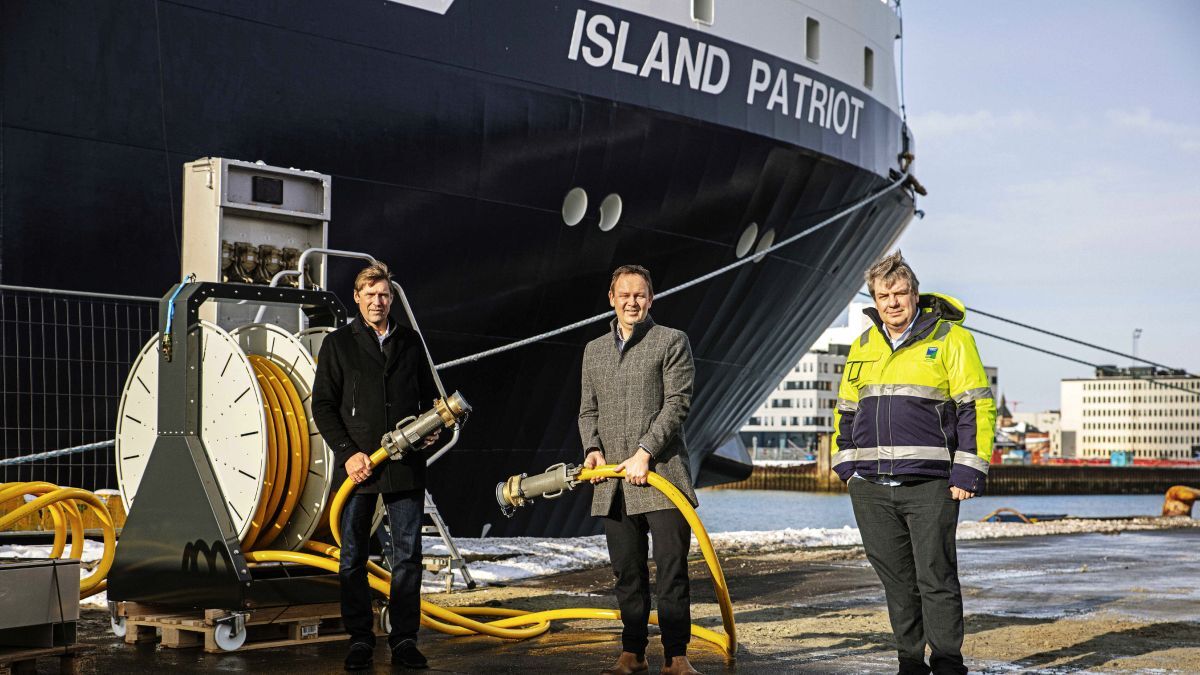
Ports are investing in shore power and alternative fuel bunkering for offshore support vessels to underpin the industry’s migration towards cleaner energy to support decarbonisation and improve efficiency. One of the actions to be taken this year by the European Commission is to revise the 2014 Alternative Fuels Infrastructure Directive, which required EU countries to develop national policy frameworks for creating refuelling and recharging points for alternative fuel vehicles and vessels.
By using shore power, vessels can turn off their diesel generators while docked, plugging into the onshore power to reduce greenhouse gas (GHG) emissions at ports. In the case of hybrid-battery or all-electric vessels, shore power can be used to recharge batteries.
There are now about 100 ports globally offering shore power. The European Sea Ports Organisation (ESPO) reports about 40% of the respondents to its 2020 survey said they planned to install shore power in the next two years. Increasingly, that electricity will be supplied by renewable energy.
One the latest ports to offer shore power for offshore vessels is Denmark’s Port of Esbjerg. The country’s largest port on the North Sea, the Port of Esbjerg is a primary supply and service hub for the offshore oil and gas industry and Europe’s offshore wind market.
StimWell Services’ Island Patriot was the first vessel to connect to a new shore-to-ship power plant in February, allowing the well stimulation vessel to shutdown its onboard diesel generator while docked.
“We want to contribute to reducing carbon emissions and promoting the green transition, and the ship’s owners have put their money where their mouth is by investing a considerable sum in readying the vessel to connect to the new green power supply,” says Flemming Copsø, chief executive of Copco A/S, operator of the supply base for Island Patriot at the port.
The port’s shore-to-ship power plant has a capacity of 1,300 amp, allowing it to supply power simultaneously to a number of vessels similar in size to Island Patriot.
Port of Esbjerg chief executive Dennis Jul Pederson is seeing increasing demand for shore power at the port. “More and more customers ask for onshore power, so for us, it’s not just about participating actively in the green transition … but also a must for business.”
“It’s not just about participating actively in the green transition … it’s a must for business”
Connecting to shore power reduces CO2, NOx and SOx emissions while eliminating ambient noise made by operating onboard diesel generators in port.
The shore-to-ship power plant dovetails with the port’s sustainable ambitions. The Esbjerg and Denmark’s largest container port, the Port of Aarhus, are both members of the Getting to Zero Coalition – 140 companies that are aiming to get the first zero-emission vessels operating on zero emission fuels by 2030. One of the coalition’s heavyweights, Danish container shipping giant AP Møller-Maersk, has vowed to launch shipping’s first carbon-neutral ship by 2023. This 2,000-TEU feeder ship would operate on bio-methanol or e-methanol.
Maersk is not betting the house on carbon-neutral methanol, but aligning itself for a multi-fuel future. Its offshore marine logistics unit, Maersk Supply Service, is implementing several technology initiatives to decarbonise its OSV fleet. It expects to save emissions using battery optimisation on hybrid diesel-electric vessels (15%), biofuels, fatty acid methyl esters and hydrotreated vegetable oil in select vessels (7 to 10%) and shore power, either in port or using a power buoy (5%).
In H2 2021, Maersk Supply Service will begin testing the power buoy – a mooring point and charging station – developed jointly with Danish renewable energy company Ørsted. Supplying green electricity from an offshore windfarm’s power grid, the buoy can be used to charge battery- or hybrid-electrical vessels and supply power to larger vessels, enabling them to turn off their diesel engines when laying idle. By substituting fossil-based fuels with green electricity, virtually all emissions are eliminated while the buoy is in use, says Maersk Supply Service.
If proven successful, power buoys could become ubiquitous at offshore windfarms. Ørsted plans to make any intellectual property generated in designing the integration of the buoy into the offshore wind asset publicly available to maximise its uptake across the offshore wind sector.
"fuel" - Google News
March 29, 2021 at 03:43PM
https://ift.tt/3fpi6JZ
Sustainable ports: clean power, fuel options grow for offshore - Riviera Maritime Media
"fuel" - Google News
https://ift.tt/2WjmVcZ
Bagikan Berita Ini














0 Response to "Sustainable ports: clean power, fuel options grow for offshore - Riviera Maritime Media"
Post a Comment